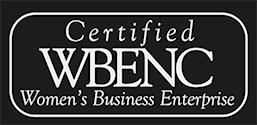It may be a stereotype, but artists are not known as good business people.
One of those “right brain/left brain” things, maybe?
But the skills of an artist — big imagination, creativity, adaptability, and the willingness to learn new things and take on new challenges — can serve an artist as well in business as they do in creative work.
Here Laura Zabel, executive director of Springboard for the Arts and founder of Creative Exchange, shares five tips for artists wanting to make a living and a life in the arts. These tips are also helpful for business people looking to bring more creativity to their company.
1. Don’t set your sights on starving
What you want to get out of your career and how satisfied you feel will depend a lot on how you frame and understand success. Don’t let yourself be caught in the frame of a “starving artist,” a view that limits the satisfaction and terms of your success to how much you starve.
Identifying what you want in terms of financial resources, community connections, social change, personal growth, and other important personal criteria will extend your understanding and scope for your artistic career, help you identify your career moves, build valuable partnerships, and prioritize what you want out of your creative life.
2. Make time to make your work
You may have heard of the 10,000 hour rule, which proposes that it takes 10,000 hours, or approximately 10 years of daily practice, to attain mastery of a subject or discipline. Whether this is a true measurement or not, you need to make time to do your work, whether it is in the studio, rehearsal room, at a writing table, or community meeting.
Take an inventory of your day to determine when you are spending time productively and when you feel less productive. Then align your work schedule so that you are doing your most creative work in your best time slot, and more routine or mechanical work in your less creative time.
3. Price your work right
Selling creative work can be a daunting challenge for any artist, and pricing your work can seem like a high hurdle. Depending on your arts practice, you may have raw material or studio costs, labor costs for your working time, overhead costs for getting your work to market, and a profit that you want to make.
Knowing these numbers — and not being afraid of them — will help you set a price that puts you on a path to success and profit. If that still sounds daunting, don’t worry, there are online resources and videos to help you nail your price point.
4. Don’t go it alone
Artists are amazing learners, creators, and problem solvers, taking on new challenges and learning new skills and trades as their creativity directs them. It’s not surprising to meet an actor who also knows about carpentry and project management, or a musician who is also an electrical engineer and poster designer.
Just because we have these skills and take on challenges doesn’t mean there isn’t a point to bring in other administrative or professional help. Get educated on legal terminology and accounting best practices, and seek out resources like Volunteer Lawyers for the Arts and recordkeeping software that can help you make the most of your work of art.
5. Creativity flows in many directions
Artists know that creative inspiration can come from anywhere; the same is true for professional creativity. Find other artists in your field to share tips, support systems, and learn together. Find artists in other fields and learn from the way they organize their business, attract audiences, and support their work financially.
Look to brands, companies, and organizations outside of the arts to see what you can learn and take from them; how they keep customers engaged and their products fresh. And if you are a business outside the arts, ask an artist how they would run your business and how they might approach your company’s issues.
There is an enormous body of literature out there about creativity in business, and how the future of business belongs to creative, right-brain oriented thinkers. Artists already have that in spades, and spend their careers iterating and developing creative processes and products that spark our imaginations and inspire us.
An economy where artists are well-versed and supported in business is an economy where businesses can best be buoyed by the creativity of artists, the best of all possible worlds.



